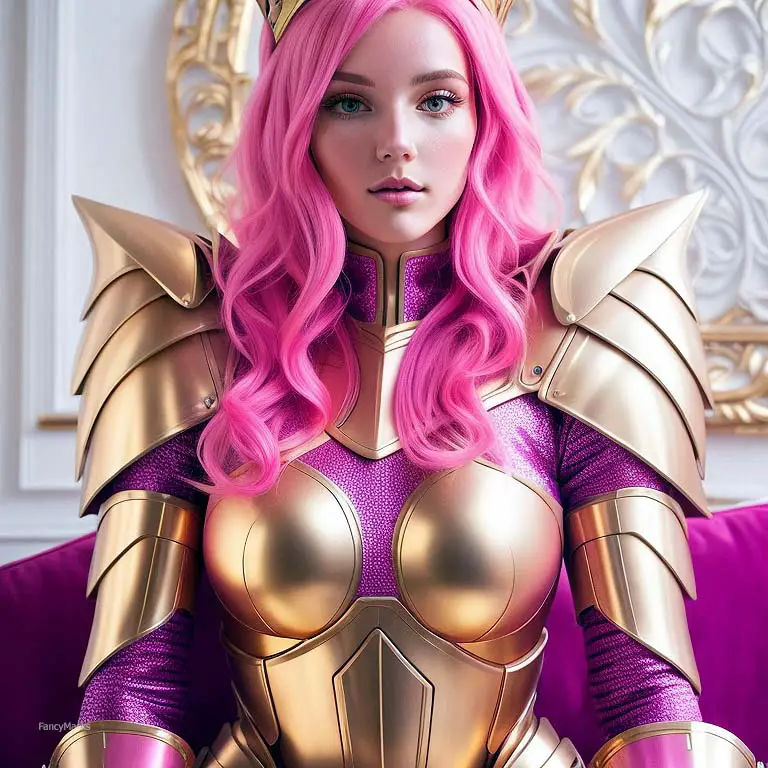There are many factors that can influence one’s choice when it comes to Cosplay Armor Materials. Some things to consider are cost effectiveness and budgeting as cosplay materials can range from cardboard and eva foam to more expensive options such as Worbla or metal.
When determining your Cosplay Armor Budgeting strategy, it’s important to take into account not just the cost of materials but also tools required for crafting. In fact, crafting tutorials play a crucial role in guiding newcomers and veterans alike on how best to utilise different materials in order to bring their envisioned armor designs from concept sketches into tangible reality.
There’s a multitude of detailed Cosplay Crafting Tutorials available online today that provide step-by-step guides on DIY Cosplay procedures ranging from Homemade Cosplay Armor techniques to professional equipment usage. Comfort is another significant aspect while crafting Comfortable Cosplay Armor.

You would want your armor not merely visually stunning but also comfortable enough for extended wear at conventions or photoshoots. For instance, lightweight materials like foam might be preferred over heavier ones like metal or resin because they offer greater mobility without compromising too much on aesthetic appeal.
Now let’s talk about finishing options – an aspect often overlooked by beginners yet incredibly important in achieving Detailed Cosplay Armor. Depending upon your selected material itself, you might decide between painting, distressing or even layering techniques for finishing your piece de resistance.
Various online platforms have emerged making it easier than ever before for cosplayers worldwide to purchase not just raw materials but also pre-made pieces based on popular characters from established cosplay Material Suppliers. The rise of these platforms has made an array of materials accessible like never before empowering many enthusiasts with possibilities limited only by their imagination!
Keep in mind that every project is unique hence requires a different approach towards material selection for this amazing art form called ‘Cosplay’. It all boils down ultimately to personal preference combined with one’s level of skill and experience with Crafted Cosplay Armor Design.
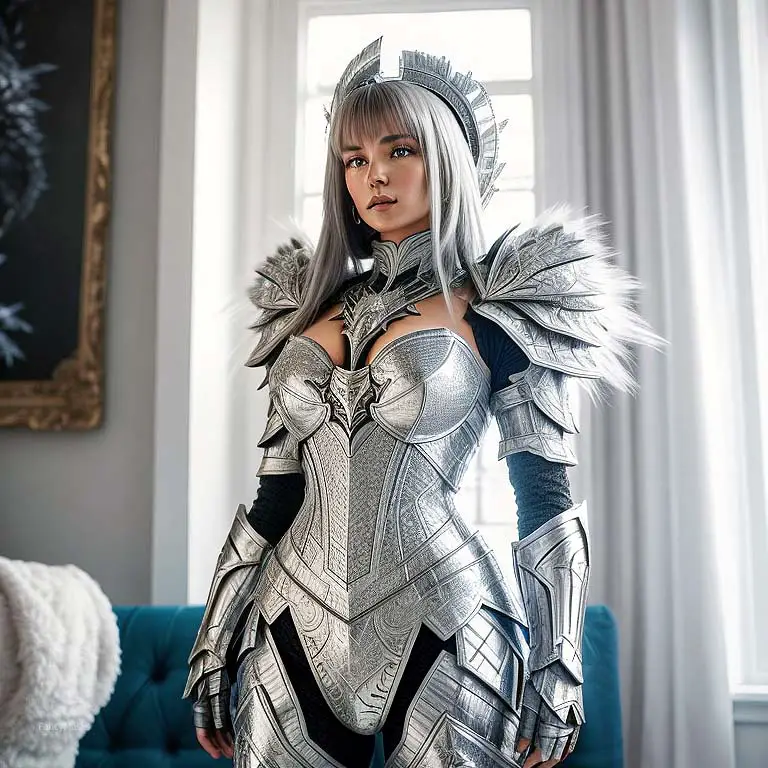
Cosplay Armor made from Cardboard
Sure, you’re a cosplay enthusiast and you’ve decided to craft your own set of armor. It’s an exciting journey to undertake, but it can also be overwhelming when it comes to selecting materials. We’ve created a full guide on creating cosplay armor from cardboard
That’s right! The first step in creating your homemade cosplay armor is choosing the right material.
Cardboard and paper might seem like an unlikely choice at first glance, but hear me out. Paper is a fantastic starting point for those on a budget or trying their hand at crafting cosplay armor for the first time.
It’s light, easy to work with, and above all else, it’s super cost-effective! Cosplay Armor Budgeting becomes less of a problem when the material itself is so affordable.
Secondly, paper is flexible and can be molded into diverse shapes with just a little bit of creativity and effort. If you’re starting out in this entertaining world of DIY Cosplay, paper can be your best friend.
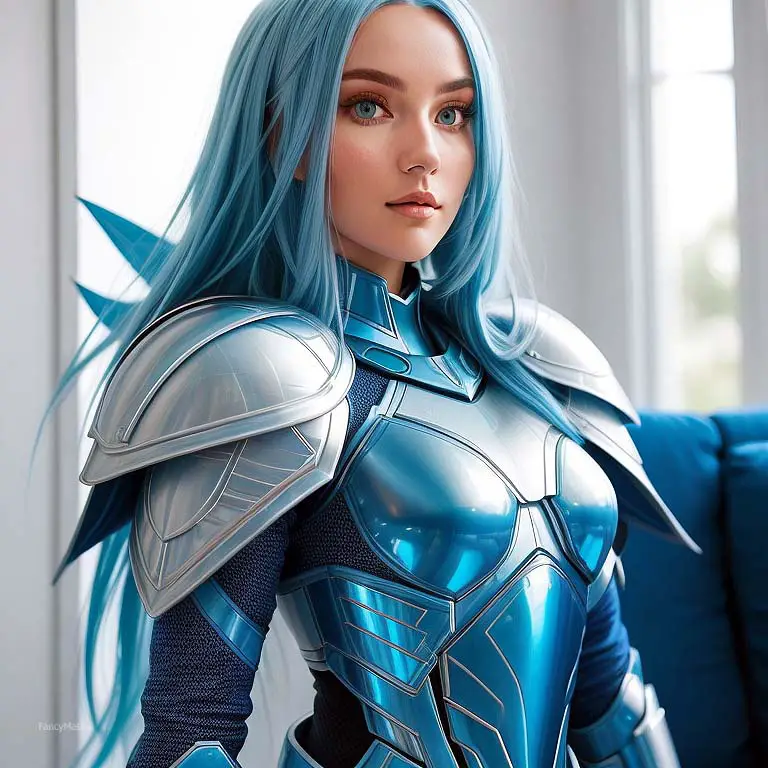
Why? Because working with paper requires minimal tools which most likely you already have at home such as scissors, glue or tape.
You won’t need any fancy specialized equipment or specific crafting skills making it an inviting option for beginners. Now let’s talk about design and detail; two critical elements that make cosplay armor stand out from the crowd.
Cardboard has you covered. One technique that really shines when using paper as your base material is papier-mache; this method allows for precise detailing in your cosplay armor design by adding layers upon layers until desired shape and thickness are achieved.
But what about finishing options? Well with some careful planning and execution – think proper sealing followed by priming – you can paint over paper to give it that metallic look associated with traditional armors.
Plus there are plenty of Cosplay Crafting Tutorials available online specifically targeted toward working with paper! However, while selecting materials for crafting detailed cosplay armor design there are few things to consider: durability and comfort could be compromised if not handled properly due its fragile nature compared to other heavier duty materials like foam or plastics.
So my fellow cosplayers remember – sometimes best materials for cosplay aren’t always most expensive one! Begin your adventure in crafting comfortable cosplay armor with humble yet versatile material like paper – who knows where this path may lead?
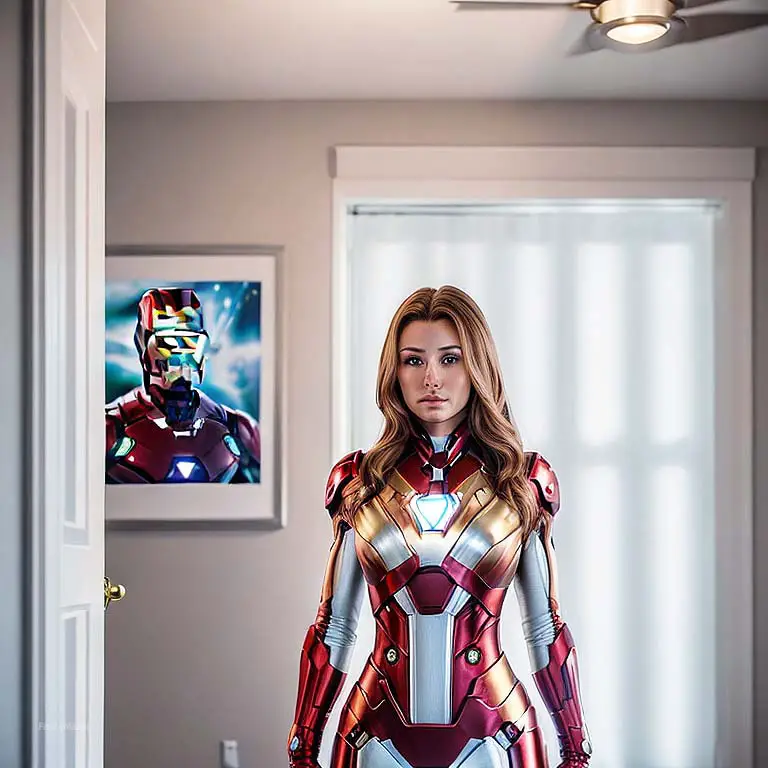
Cosplay Armor made from EVA foam
Stepping into the exciting and creatively charged world of cosplay, you’ll soon realize that your choice of materials can dramatically impact the final result. EVA foam is one of those options that can elevate your cosplay crafting experience by leaps and bounds.
Not only is it versatile, but it’s also budget-friendly, making it an excellent choice if you’re crafting cosplay armor on a tight budget. EVA foam comes in different thicknesses and densities, offering you a range of options based on your specific needs.
You can get sheets as thin as 2mm or as thick as 10mm from many cosplay material suppliers. It’s lightweight yet durable nature makes EVA foam perfect for creating detailed cosplay armor that doesn’t weigh you down or restrict movement.
This ensures you’re not only looking good but also feeling comfortable in your homemade cosplay armor. One of the best things about this material is its inherent flexibility which makes it perfect for crafting intricate designs and shapes generally seen in various types of armor.
With a bit of heat (best applied with a heat gun), EVA foam becomes malleable and ready to take on whatever form or shape your design requires. Once cooled down, it retains its shape while still being flexible enough to wear comfortably – an important factor often overlooked when discussing Cosplay Armor Techniques.
But what truly sets EVA Foam apart from other materials used in DIY Cosplay projects like paper or plastic is the texture; the surface can be carved, sanded, sealed, and painted to mimic nearly any look imaginable – metallic finishes, weathered leather, polished stones – allowing for endless Cosplay Armor Finishing Options. However, no material comes without its downsides – so let’s address those too—EVA Foam has a tendency to dent easily; hence some caution is needed when handling your finished pieces around pointed objects or heavy traffic areas.
Also worth noting: high-quality paints are recommended for finishing since cheaper ones might flake off over time because of the natural flexibility of the material. : if you’re looking for an affordable yet versatile medium that offers ease-of-use and unlimited creative freedom when designing and crafting cosplay armor then don’t dismiss EVA Foam without consideration—it could very well be one of the best materials for Cosplay you haven’t tried yet!

Overview of Cosplay Armor Made from Worbla
Worbla, if you’ve not heard of it, is a total game-changer in the world of cosplay armor materials. It’s a thermoplastic material that gets soft and moldable when heated, allowing for in-depth customization and detailed cosplay armor designs. What makes Worbla particularly appealing is its ability to hold intricate detail. Here’s our guide on Worbla cosplay armor.
You can etch lines into it, shape it into ridges and valleys, or even sculpt it into complex designs. Being DIY cosplay friendly, Worbla has taken the cosplay community by storm.
It’s easy to use at home with just a heat gun and some basic tools. No need for fancy equipment or a workshop space!
Heck, you can craft your armor while binge-watching your favorite show! Furthermore, compared to other materials like metal or leather, Worbla provides an easier crafting experience without compromising on the end result.
However, one thing to keep in mind while choosing Worbla as your material is budgeting. As the old saying goes – quality comes at a price.
While you’ll find plenty of online tutorials boasting about how easy it is to work with this material – which by all means it indeed is – they often don’t tell you about how much of an investment it can be initially. Make sure to check out different Cosplay Material Suppliers before making an investment.
Worbla also comes with some awesome finishing options; It paints well and adheres to almost any adhesive nicely which gives cosplayers endless possibilities for customization! You can add layers of different colors, use metallic spray paint for an iron finish or use acrylics for a detailed look!
But remember that sealing your work before painting – usually with several layers of wood glue or gesso – will ensure long-lasting results and prevent flaking paint on your homemade cosplay armor. But importantly consider comfort.
Comfortable cosplay armor isn’t always easy to achieve but thankfully due its flexibility when heated; Worbla can be adjusted exactly according to body dimensions resulting in not only great fits but comfortable ones too – because no one wants their epic con day ruined by chaffing or pinching from ill-fitting gear! So whether you’re new on the scene or are looking for new materials options – if crafted right – Worbla might just prove itself as one amongst the best materials for Cosplay Armor creations.
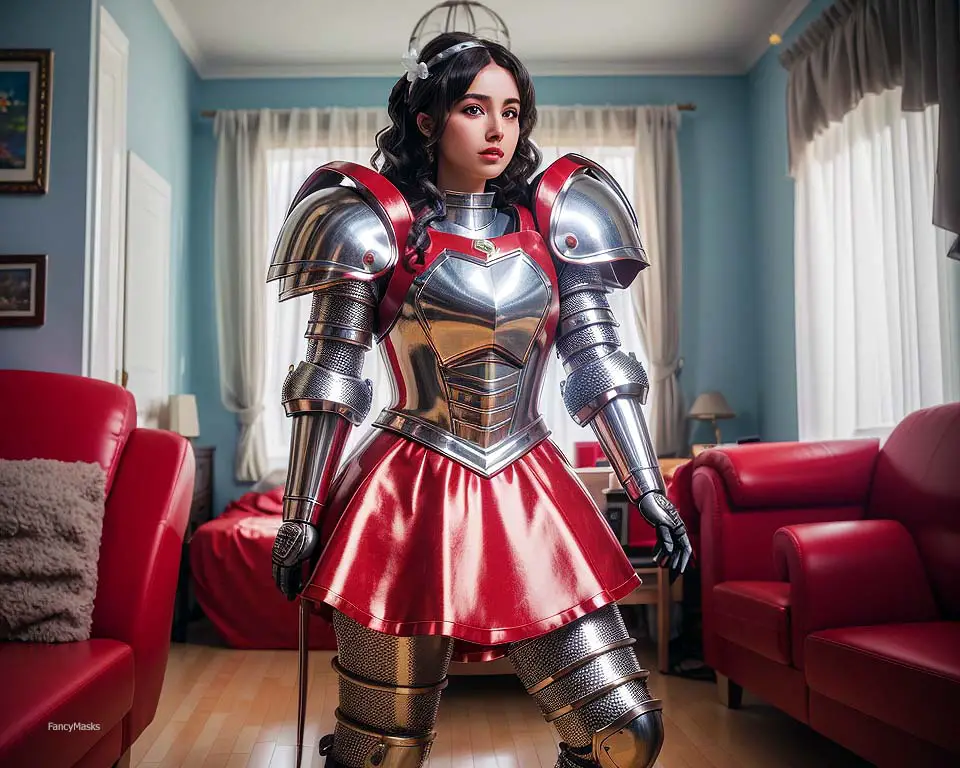
Overview of Cosplay Armor Made from 3D Printing
If you’re into the DIY cosplay scene, you’ve probably heard about 3D printing. It’s an incredible tool for crafting cosplay armor, and offers a multitude of opportunities for creating intricate and unique designs.
It has emerged as a game-changer in the world of cosplay crafting, allowing even novice cosplayers to produce detailed cosplay armor with relative ease. Firstly, it’s important to note that while 3D printing might sound like something out of a science fiction novel, it’s actually quite accessible.
Many local libraries or makerspaces offer access to 3D printers at a low cost or sometimes even for free. What this means for you is that your cosplay armor budgeting might not take as much of a hit as you’d initially think.
What makes 3D printing armor stand out amongst other cosplay armor materials is the level of detailed customization it allows. Whether it’s intricate Celtic knotwork on your gauntlets or scale-like textures on your dragon-themed breastplate – with 3D printing, if you can imagine it, chances are you can create it.
This flexibility makes it one of the best materials for cosplay when aiming for high levels of detail. So how does this work?
Well, once you have your design ready in a digital format (there are many tutorials online if you’re new to this), it’s just a matter of sending it off to be printed and then waiting patiently. After receiving your printed parts back from the printer, there’s still work left – assembly and finishing touch-ups using various cosplay armor techniques.
Don’t worry though; there are plenty of Cosplay Crafting Tutorials available online that can guide through these steps. That being said, while 3D printed armor has many benefits including precision detailing and affordable prices when considering material selection for Cosplay Armor Design – there are few downsides too; one notable drawback being comfortability if not designed carefully keeping human body ergonomics in mind!
Hence some cosplayers prefer traditional methods like EVA foam or Worbla which allow more flexibility and physical adjustment compared to rigid pieces produced by 3d Printing. Still undecided?
That’s okay! Partaking in the splendorous realm of homemade cosplay armor involves numerous considerations like cost-effectiveness; availability from Cosplay Material Suppliers; personal skills; equipment availability etc. Remember: No choice is inherently superior – they each have their own strengths & weaknesses depending largely on personal preferences & circumstances.
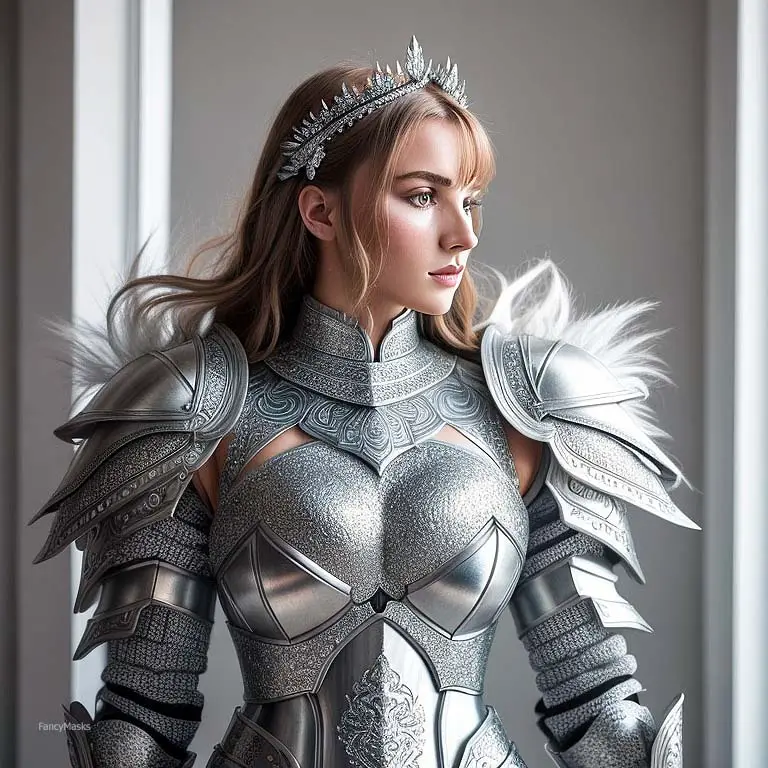
Overview of Cosplay Armor Made from Resin Casting
Resin casting holds a unique place in the cosplay crafting experience. Predominantly, it’s a technique used when you want to make multiple copies of a particular piece, such as a detailed emblem or intricately designed accessory that features prominently in your character’s armor.
The process begins with creating an original model of the piece you wish to duplicate. Once this is done, you can then make a mold from silicone or rubber and cast your pieces using resin.
Now, when it comes to cosplay crafting tutorials involving resin casting, you’ll often find that they seem daunting at first glance. There are all these terms like catalysts, molds, and hardeners that might throw off a novice cosplayer.
But don’t be intimidated! At its heart, resin casting is just another method in the vast realm of DIY cosplay techniques geared towards creating stunning and detailed cosplay armor.
As for the budgeting aspect of using resin for your cosplay armor needs – well let’s just say it isn’t exactly cheap. The initial setup cost can be quite high compared to other materials such as EVA foam or Worbla because of all the different components involved (molds, resin itself etc.) However, once you’ve set yourself up with all the right tools and materials from reputable cosplay material suppliers – even though there may be numerous – the per-piece cost drops significantly especially if you’re making multiple copies.
The great thing about homemade cosplay armor made from resin casting is how secure it ends up being! This stuff gets rock hard (literally!) once it cures completely which can take anywhere from several hours to days depending on your specific product instructions.
And despite its robustness post-curing stage; during its liquid form stage prior to curing–it’s exceptionally flexible allowing for complex shapes and designs which makes material selection for Cosplay crucial! Let’s talk about one aspect that isn’t addressed often enough – comfort!
While having comfortable Cosplay Armor might seem like an oxymoron to some; thanks to modern advancements & various Cosplay Armor finishing options at our disposal today–even something as sturdy as Resin can provide reasonable comfort levels with correct design & technique application. So there we have it!
A little overview into one more technique under our belt–resin casting for our Cosplay Armor needs achieving some truly magnificent results due credit given not only towards material selection but also thoughtful design principles ensuring both aesthetics and utility are kept intact! You really are limited only by two things here: Your imagination…and perhaps your budget too!
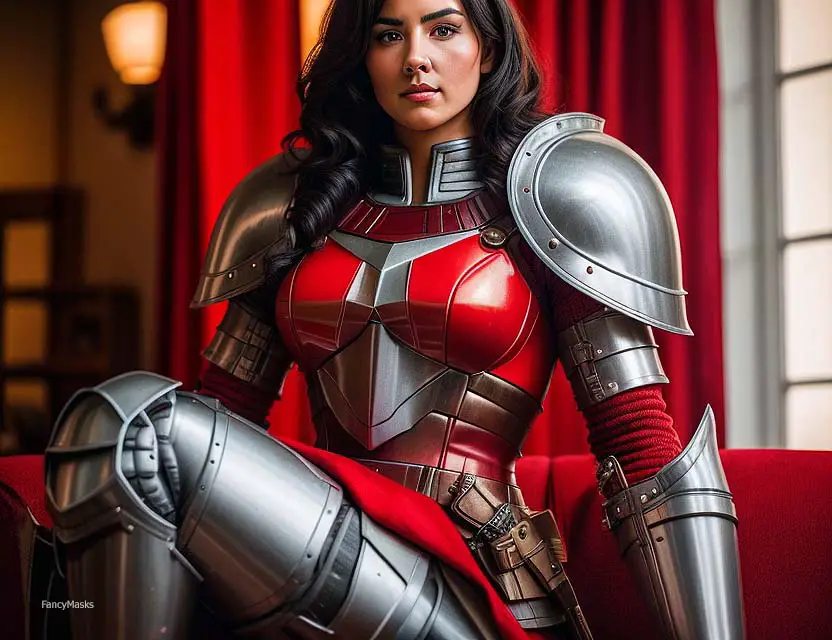
Overview of Cosplay Armor Made from Metal
When you think of armor, the immediate material that comes to mind is likely metal. It’s the traditional choice for knights and warriors throughout history, after all.
However, when it comes to cosplay armor, using metal presents a range of unique challenges and rewards. Let’s delve into the detailed cosplay armor creation process using this timeless material.
Metal is hefty and durable, offering an authentic feel that other materials just can’t replicate. For those with some experience in metalwork, crafting homemade cosplay armor from this material can result in spectacularly realistic pieces.
However, one should not embark on this path lightly; working with metal requires specialized tools and safety measures due to its rigidity and sharp edges during the cutting process. When considering comfort in your cosplay ensemble, metal may not be your first choice.
Metal is heavy – much heavier than foam or plastic – so wearing a full suit of metal armor for hours at a time can be quite taxing on the body. Not to mention temperature control; anyone who has worn a tin foil hat in the sun can attest that metal heats up quickly!
So if you’re planning for an outdoor summer convention, you might want to rethink using metal as your primary cosplay armor materials. However, if you are firmly resolved against all odds to make DIY Cosplay Armor from Metal – fret not!
There are numerous Cosplay Crafting Tutorials available online designed specifically for beginners eager to learn about crafting cosplay armor from scratch using metals such as aluminum or even light steel sheets. These tutorials offer step-by-step guides covering everything from designing your pieces and selecting suitable types of metals through respected Cosplay Material Suppliers to applying different finishing options like painting or patina effects for an aged look.
Budgeting plays a key role here too since working with real metal may incur more costs than other materials due to both raw material cost and tool requirement. On top of that depending on the complexity level of your desired design could significantly increase labor time which impacts overall project duration hence cost.
Hence it’s wise beforehand doing some Cosplay Armor Budgeting especially when diving into new territory not familiar with. Metalwork does indeed open up intriguing possibilities creating incredibly detailed cosplay armour rich in texture and realism like nothing else could achieve but comes attached with its own set of complexities too needing careful consideration before embarking upon.
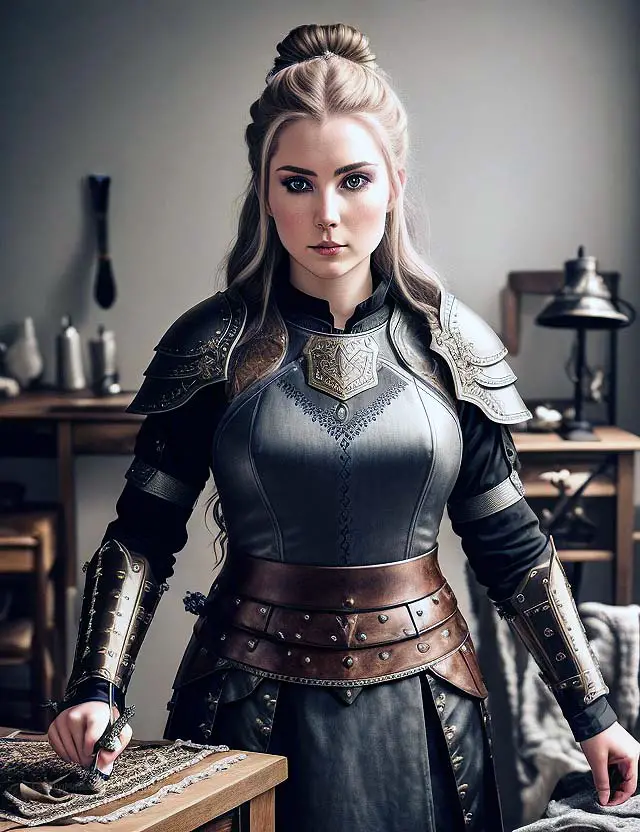
Overview of Cosplay Armor Made from Leather
Imagine this: you’re at a cosplay convention, and you’re wearing a suit of armor that has been painstakingly constructed from leather. You have spent hours upon hours crafting it, paying attention to every detail, and now all your hard work is paying off as other attendees marvel at your creation. This experience could be yours if you choose leather as your material for cosplay armor.
Cosplay armor made from leather offers a distinct look and feel that many cosplayers find appealing. There’s something about the texture of leather, the way it moves and bends with you, that can’t be replicated by other materials.
It’s also incredibly durable – if cared for properly, a piece of leather armor can last for years or even decades. Making cosplay armor out of leather does however require some investment both in terms of time and money.
Leather isn’t exactly cheap – particularly if you want high-quality stuff – but there are many Cosplay Material Suppliers who offer decent prices on bulk orders. Cosplay Armor Budgeting becomes crucial in such cases when balancing between the material cost and quality desired.
Worry not though! The internet is filled with Cosplay Crafting Tutorials which guide DIY Cosplay enthusiasts like us about different Cosplay Armor Techniques involved in turning raw pieces of hide into detailed protective gear worthy of any medieval knight or fantasy warrior.
Such Crafting Cosplay Armor tutorials often provide ideas about various Cosplay Armor Design concepts as well as guide about different Cosplay Armor Finishing Options available depending upon the type of appearance one wants to achieve. Comfortable Cosplay Armor constructed using leather does involve careful tailoring so it fits just right without restricting movement too much – another aspect where Homemade Cosplay Armors shine above factory-made ones.
So go ahead! Unleash your creativity by choosing one among Best Materials for Cosplay i.e., Leather for your next project.
Overview of Cosplay Armor made from Faux Leather
When it comes to versatility, faux leather holds its own among the best materials for cosplay armor. Its malleability and varied finish options make it a favorite among cosplayers, especially those aiming to create comfortable cosplay armor that doesn’t compromise on detail. Faux leather can emulate the ruggedness of real leather or the sleek shine of patent leather depending on your finishing technique.
It’s ideal for those who want to experiment with different looks without spending too much. If you’re new to cosplay crafting, faux leather is an excellent place to start.
It’s a very forgiving material that allows room for mistakes and adjustments. If you cut a piece slightly off-size, you can usually stretch it into shape or trim it without destroying your work.
This is particularly beneficial if you’re following along with cosplay crafting tutorials at home and need some leeway as you learn new techniques. One of the best aspects of crafting cosplay armor from faux leather is its cost-effectiveness.
Compared to genuine leather or metal, faux leather is often significantly cheaper while still offering an authentic-looking result. This makes it a great option if budgeting is a key part of your material selection for cosplay projects.
Further, many craft stores and even online cosplay material suppliers provide a wide spectrum of faux leathers in various colors and textures which means that DIY Cosplay has never been easier! You can choose anything from soft suede-like finishes to rougher textures intended to mimic cured animal hide.
However, keep in mind that while faux leather may be more budget-friendly than some materials, it does require certain tools and techniques for proper manipulation. Notably are: adhesive specifically designed for fabric or vinyl use; A well-ventilated area when applying said adhesive; heavy-duty scissors or rotary cutter; strong thread if sewing by hand (faux leather can be tough on standard thread).
But don’t let this deter you! Creating detailed cosplay armor from faux leather can be one of the most rewarding experiences in your journey as a cosplayer.
Overview of Cosplay Armor made from Styrofoam
Delving into the realm of cosplay armor materials, one cannot overlook the humble yet surprisingly versatile styrofoam. It might not be the first thing that springs to mind when you think about crafting detailed cosplay armor, but let me assure you, it has its own distinctive charm.
For novice cosplayers working on a tight budget, styrofoam is a godsend. Cosplay Armor Budgeting can be an intimidating process.
With prices of materials like Worbla or EVA foam skyrocketing, styrofoam emerges as an economical and readily available solution. You can find it at many Cosplay Material Suppliers or even repurpose old packaging you have lying around at home.
This makes for an excellent Homemade Cosplay Armor project without breaking the bank. Before you dive in though, there’s one fundamental truth you need to remember about Material Selection for Cosplay – all materials have their pros and cons.
Styrofoam is lightweight and easy to shape, making it a great choice for those large armor pieces that could otherwise weigh you down. Imagine marching around a convention center in a massive shoulder guard made from metal or resin!
In terms of Comfortable Cosplay Armor, styrofoam wins hands down. However, styrofoam does require some specific handling techniques for best results.
When Crafting Cosplay Armor from Styrofoam, heat tools are typically off-limits due to melting risks. Instead of heat-shaping like we do with EVA foam or Worbla, we use cutting and carving techniques here – think more along the lines of sculpture than traditional smithy work!
And fret not if this sounds daunting – there are plenty of Cosplay Crafting Tutorials available online which guide through every step in detail. Now let’s talk about finishing options because your final touch is what transforms your creation into something truly spectacular!
DIY Cosplay with Styrofoam takes well to various finishing techniques from painting to decoupage using tissue paper or thin fabric swatches for creating texture effects on your armor design. While it may require some getting used-to initially due to its distinctive crafting methods compared to other popular cosplay materials such as EVA foam or worbla; with patience and practice styrofoam can produce fantastic looking armors that are light on both your shoulders and wallet!
Conslusion
Over the course of this article, we’ve traversed an expansive realm of options when it comes to crafting your own cosplay armor. From the humble beginnings of paper-based armor to the technicalities of 3D printing, each method has presented its own advantages and challenges.
Cost is often a pivotal factor in the crafting process. Cosplay Armor Budgeting is crucial as materials can range vastly in price.
Paper and foam, for example, are far more affordable than leather or metal. However, cost isn’t the only thing to consider when selecting materials for your cosplay project.
The Homemade Cosplay Armor you intend to create might require a specific look or texture that some materials simply can’t provide. Your chosen material should also reflect your level of experience with cosplay crafting techniques.
If you’re new to DIY Cosplay, starting with simpler materials like foam or paper could be beneficial before diving into more complex procedures such as resin casting or metalwork. Detailed tutorials are available online for every material type mentioned here which can help guide you through their unique processes.
Comfort is another significant aspect in Material Selection for Cosplay; after all, you’ll likely be wearing this armor for extended periods at conventions or photoshoots. Lightweight options such as EVA foam or Worbla may be preferable if mobility and comfort rank high on your list of priorities.
Choosing the right material for your cosplay armor involves balancing multiple factors including budget, comfort, design aesthetic and personal crafting abilities. By carefully considering each element and doing some research on available Cosplay Material Suppliers who offer good quality items at a reasonable cost – be it leatherworkers online or local hardware stores – you’ll find yourself well-equipped to make an informed decision about which material will work best for your next cosplay project.
The journey towards creating detailed cosplay armor can be just as fulfilling as showcasing the final product itself – it’s a labor of love filled with learning experiences that will only enhance your craftsmanship over time! So enjoy each step from design sketches through selecting finishing options and remember: patience will always yield success in the end.

